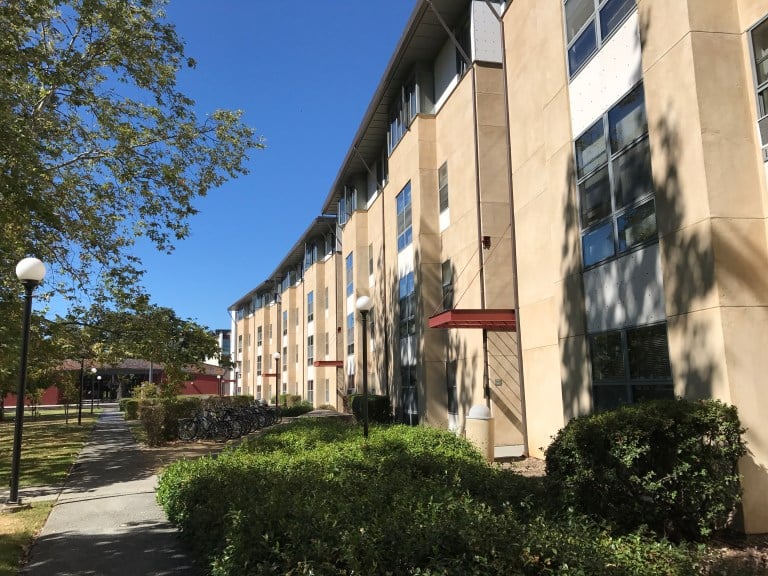This past June, California experienced its worst heat wave in over a decade, resulting in the deaths of two people in San Jose from heat exhaustion, according to the Mercury News. Fans, open windows and — of course — fountain-hopping are some tactics for handling the heat. Even with these options, some students ask one question: why don’t dorms have air-conditioning?
“Personally, air conditioning is almost super necessary, especially in the beginning months and the end months of the school year,” said former Kimball resident Ryan Mathias ’19. “The dorms get pretty ridiculously hot.”
Keeping cool is desirable, but it is a necessity for some students with medical accommodations. Jocelyn Breeland, the Executive Director for Strategic Communications for Residential & Dining Enterprises (R&DE), recognizes the risk of extreme heat for some residents, and clarifies that R&DE works accordingly with the Office of Accessible Education to help accommodate the needs of these students.
“Stanford enjoys moderate temperatures year-round with low humidity,” Breeland said. “For this reason, and to conserve non-renewable energy resources, the university generally does not support the installation of air-conditioning in university facilities.”

Many students believe that although environmental effects should factor into university decisions, these concerns should not outweigh the importance of improving the comfort of residents.
“I recognize that there are bigger issues in the world and on campus,” said Niki Mani ’19, a mentor for the High School Summer College in Crothers. “That being said, I feel like a school like Stanford should have air-conditioning.”
Mani said that when her summer high school residents moved in, the most common question students and parents asked was if there was air-conditioning and where they could buy fans.
Summer Session and graduate housing residents received a notice from R&DE providing a list of ideas for staying cool before the heat wave, including ideas like swimming, opening windows and finding other areas on campus that have air conditioners. According to Breeland, R&DE supplied residents with industrial fans one year to aid air circulation during a rare, prolonged heat wave.
Despite the occasional heat, many Summer Session students are understanding of the university’s motives and found ways to deal with the lack of air-conditioning.
One summer Murray resident, Lark Zheng Wang ’20, said she supports Stanford’s commitment to sustainability and finds other ways to beat the heat.
“My roommate keeps the windows open sometimes at night and that lets air in, and my mom bought me a fan to use for short periods of time,” Wang said. “It might get uncomfortable sometimes when the temperature does become warmer, but I feel like it could be a lot warmer, and I just make sure to follow the tips [R&DE] sends out and keep hydrated.”
Students who are just here for the Summer Session have learned how to handle the heat pretty quickly. Tasneem Khan from the University of Cape Town likes to take walks when it gets too hot in her second floor room in Robinson. Meanwhile, for Daniel Terziev from the University of Greenwich in London and Sarthak Tandon from the Netaji Subhas Institute of Technology in Delhi, keeping a window open is a sufficient alternative for air-conditioning.
Still, some visitors question why a university as prestigious as Stanford hasn’t installed air conditioners.
“I think it is something they have probably considered, and I am not sure why they haven’t done it yet,” said Vaib Gadodia, a Summer Session resident from New York University. “Obviously they can afford it, and it would make it more comfortable if they had some sort of cooling system.”
Contact Karen Ma at karems2000 ‘at’ gmail.com
Correction: In an earlier version of this story, The Daily incorrectly stated that R&DE Student Housing will not install air conditioners as an accommodation. However, if the Office of Accessible Education deems it necessary, R&DE will install an air conditioner in a student room. The Daily regrets this error.
